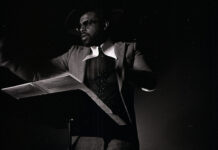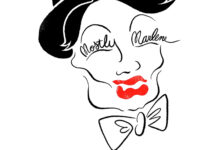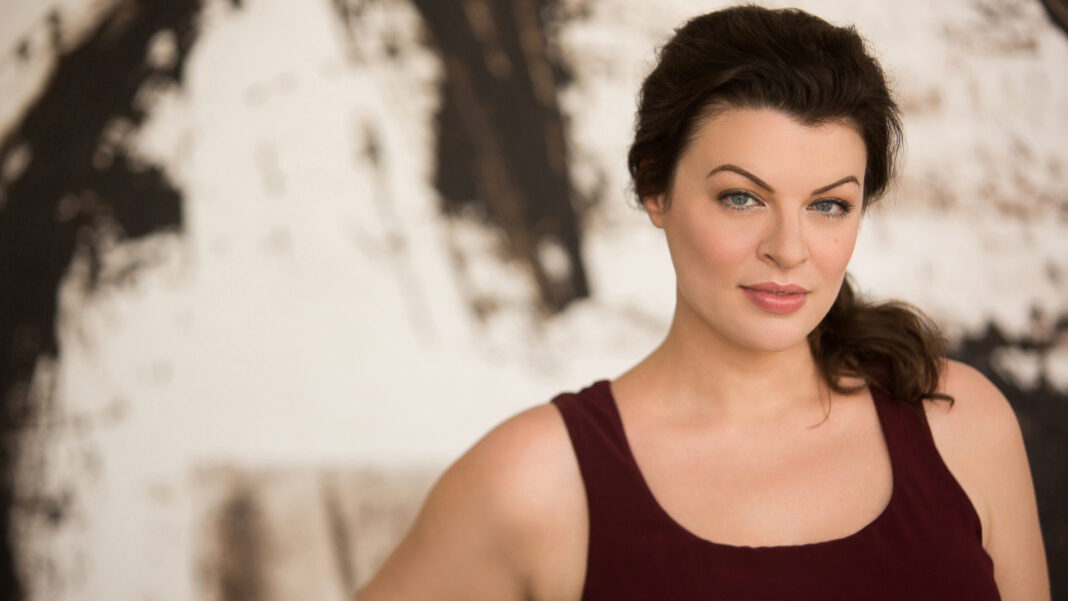Last May the Los Angeles Philharmonic was scheduled to give the world premiere of an untitled violin concerto by composer Julia Adolphe. We all know why that concert didn’t take place. That doesn’t mean the work was shelved indefinitely. In fact, Adolphe’s concerto, which now has the title Woven Loom, Silver Spindle, will have its world premiere on Friday at Walt Disney Concert Hall with two additional performances on Saturday and Sunday.
Adolphe is considered one of the finest composers of her generation. She has multiple commissions ahead of her and a handful of works that have yet to have their premieres. She writes in all forms: chamber music, choral, concerti, orchestral and opera. Her compositions have been performed by LA Phil, the New York Philharmonic, the Brooklyn Youth Chorus and more.
The day before Thanksgiving, I hopped on a Zoom call to talk with Adolphe about Woven Loom, Silver Spindle and the nature of creativity during the pandemic and its impact on how she approached this concerto. What follows are excerpts from our conversation that have been edited for length and clarity.
What inspired you to compose Woven Loom, Silver Spindle?
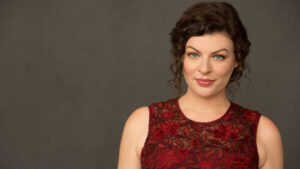
I think one of the fun parts about a concerto is that it has a dynamic that’s already set up which is the orchestra and the soloist. And so I think one of the first questions for every concerto is what is that relationship between the two and how does it change over time? Also, you think about the the specificity of that instrument. So the violin in particular has this beautiful, bright sound. And that’s sort of where I came up with the idea of this silvery spindle image; that bright kind of yellow, silver, orange colors, light green, that you can kind of hear in a violin. And so the the title, it kind of evokes that relationship of the violin in the orchestra where the the orchestra is sort of the large woven loom that carries this kind of silvery thread throughout.
How much do the times we live in influence how you feel and what you write by extension?
It’s interesting that you ask that in relation to this piece because, of course, I wrote this during the height of the pandemic. And this piece actually the first and second movements are quite different in feeling. I’ve never done this before, but I actually was switching back and forth between writing them based on what mood I was in because sometimes I just felt like it was so hard and I didn’t want to live in this sort of darker, angrier music. And so the first movement is quite light and playful. And so I would do that when I felt that way. But then sometimes I felt like I had to be in that dark place because I was so angry or scared. And so then I would write the second movement. So I’ve always written chronologically, and this is the first time that I haven’t done so. I felt so emotionally disregulated that I kind of needed to jump back and forth.
What are the challenges for you after a world premiere in finding other opportunities for people to hear this music through other performances of the work?
You kind of hope for a recording or a second performance. But honestly, I’m kind of on to the next piece in a way. I keep telling myself I want to spend time getting my existing works out. But I don’t know, I’ve sort of moved on. I think you kind of have to.
You don’t worry about the legacy of a piece or the lifetime of a piece because you’ve moved on?
No, because I think my next piece is already better, maybe, or, I feel like that’s part of letting go of your work. When you finish a piece you kind of are aware of its imperfections and things; maybe you want to do differently. Like I do want to have more aggressive drums next time. I’m finishing up the piece for the Boston Symphony and I’m focusing more on brass. I’m just kind of on to the next thing.
I saw the video that you posted last month called Letting Go of Your Work, which I thought was refreshingly candid. I don’t think I’ve ever heard a composer speak that way before. And you ask a question towards the end “if there is an unfiltered, more direct version of my sound that comes out when I’m not trying to make things perfect?” One month later, and a week before the world premiere of this work, do you have an answer to that question?
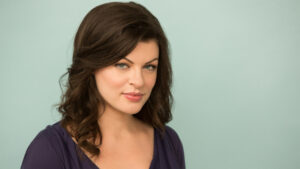
Can you ask me next week? I might have an answer because I haven’t heard this movement that I wrote that I felt was so different than the previous two. It’s so much more tonal. God forbid it has a key signature. It’s very repetitive. I’m assuming the answer is yes, not that one is better than the other, but there is a more distilled version of my voice that comes out in this third movement because I was letting go and not analyzing it. You write music and then you sort of complicate it. You write an idea and then you expand and develop it and vary it. So in a way, it’s building out. It’s interesting to see what it is when it’s just the more pure distilled thing and if that feels like enough to me.
The L.A. Phil had announced that your violin concerto was going to be premiered in May. Obviously, that was postponed. On that program it was paired with the Mahler 5th Symphony. This program it’s paired with the Beethoven 7th. Do you think that there is a better conversation to be had between your work and the Mahler or your work in the Beethoven? If you had a preference, which it would be?
I don’t know how to answer that question. Mahler maybe I feel more affinity to some of his work and his sound worlds more than Beethoven. I don’t really think about what the piece is programed with. And honestly, it’s always either Mahler or Beethoven. (She laughs) Once I got programed with Debussy. That was exciting because, you know, color and his impressionistic style is very, very impactful to me. But I do feel quite removed from Mahler and Beethoven so I don’t really have a preference.
If you could program your work with any composer or a couple of composers, who would they be?
I’d love to to to be on a concert with George Crumb and Sofia Gubaidulina. I want to be on programs with more contemporary composers, even though they are now of older generations. I think that kind of ritualistic sound world that they both share is kind of otherworldly. I don’t know if you can hear that in my music, but I’m definitely influenced and inspired by the two of them.
It’s interesting you brought up Sofia Gubaidulina because I read an interview that she gave where she said “There is a deep necessity for human beings to realize his or her unconscious. This is art. This is not only music, but it’s an art. This is what art does. It’s absolutely necessary.” Do you agree with her? And if so, how do you think your work helps you realize your unconscious?
I one thousand percent agree with her. My work is a way for me to process how I feel. To process the images that come into my mind that are in my unconscious, my dreams. All of that goes into my music. Sometimes even I get ideas for titles from my dreams. The hope is that by being as authentic and true to how I feel as possible that it will create a space for others to access their own internal world.
That’s why I don’t really share what my pieces are about. I want to give some imagery that people can imagine and latch onto. Working on it helped me process my unconscious. But I don’t want them to be distracted by it, by me. I want my music to be a vehicle for them to access their own unconscious. And that’s one of the beautiful things about music is because it does not have words. It gives you that freedom to to access your own imagination.
To see our complete interview with Julia Adolphe, please go to our YouTube channel here.
Photos of Julia Adolphe courtesy of the composer


